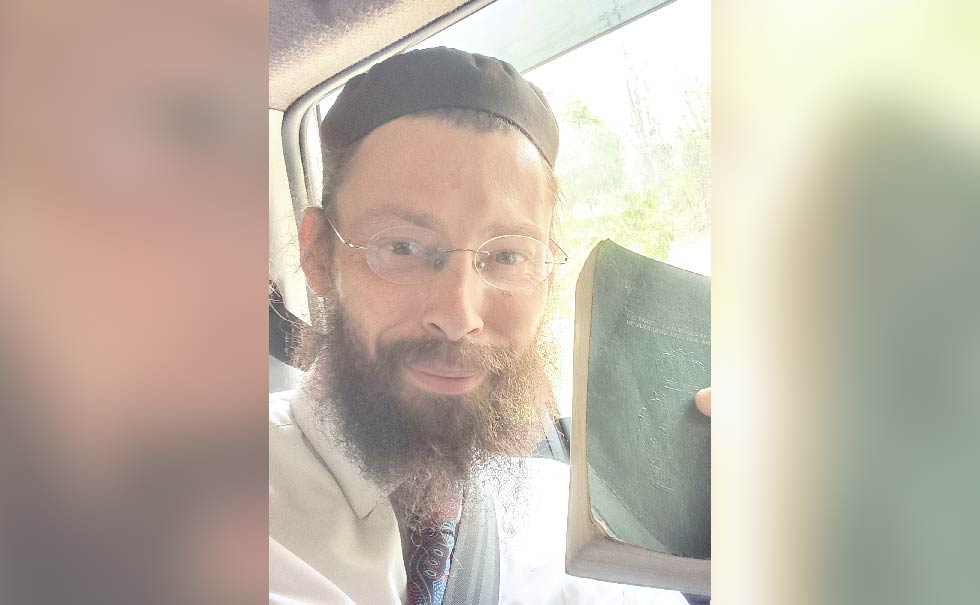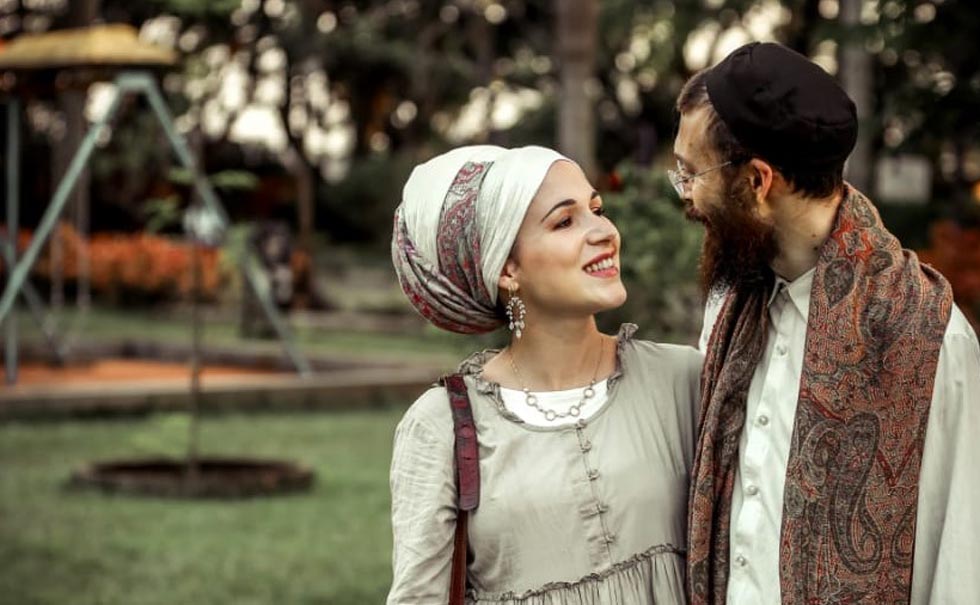Siyum Tanach
My Rov of Blessed memory, HaRav Yaakov Perets would often call our Holy Tanach, “the very foundation of all that is our faith” – I dedicate this Siyum to the memory of him and his wife, may Hashem bless their family and his students with success and goodness always:
Jews are unfortunately experts at disjointing and fracturing into various groups, movements, ideologies and sects.
Although we are a small people representing a fractional proportional of world population (estimated at a mere 15.8 million, which is approximately 0.2% of the 8 billion worldwide population – for context this is approximately the population of the city of Istanbul!) we are an extremely divided nation in terms of our religious, political and ethnic identities.
We share a common and interwoven destiny and journey and although we can be separated into various denominations there is a Book that belongs to all of us, so ubiquitous that we are even known by it, we are “the people of the Book”:
Even here we unfortunately differ rather significantly again:
The authoritative form of the Tanach used in Rabbinic Judaism is the Masoretic Text (7th to 10th century CE), which consists of 24 books:
(תנך) is an acronym that stands for the three main divisions of the Hebrew Bible, which are: Torah (תּוֹרָה: instruction or law), Nevi’im (נְבִיאִים :prophets), and Ketuvim (כְּתֻבִים: writings).
The Hebrew Bible developed during the Second Temple Period, and the Jews debated which religious texts were of divine origin and which should be included into the cannon of the Tanach due to their relevance to future generations; the Masoretic Text, compiled by the Jewish scribes and scholars of the Early Middle Ages, comprises the Hebrew and Aramaic 24 books that they considered authoritative. The Hellenized Greek-speaking Jews of Alexandria produced a Greek translation of the Hebrew Bible called “the Septuagint”, that included books later identified as the Apocrypha, while the Samaritans produced their own edition of the Torah, the Samaritan Pentateuch.[1]
In Israeli high schools, Tanakh is a core obligatory subject, taught as a historical, cultural, and literary resource, and often a religious study as well. The study of Tanakh aims to foster a deeper understanding of Jewish history, culture, and identity, as well as to develop critical thinking and analytical skills through textual analysis – it is an essential element of modern Israel’s national awareness in their historic ties to the Land of Israel. “The eternity of Israel,” Ben-Gurion once wrote[2], “is embedded in these two things: The State of Israel and the Book of Books”, this philosophy of the first prime minister of Israel even led to the insertion of a quote Tanakh in the opening paragraph of the Declaration of Independence, whose final wording was shaped by Ben-Gurion himself, this underscored the Tanakh into an essential component of Israelis’ political consciousness.
The importance was later was supported with a decision to increase Jewish studies and Tanach as an essential element of the education system as underscored by The Shenhar Committee[3] “familiarity with the history of the people of Israel and its culture is an essential element in building the identity and spiritual and value world of the young Israeli.” It is worth noting that the inclusion of Tanach and specifically Jewish studies into the secular Israeli education was not supported by all Israelis, firstly because many secular Israelis oppose any form of religious education and because some who value it nonetheless question whether it is an academic subject[4].
It remains an interesting phenomenon that the study of Tanach was not particularly focused upon at many Yeshivot[5] or Kollel[6], and many times is entirely absent as a subject altogether.
Despite this there is almost certainly no Rabbi (from any religious denomination) who would not stress that the study of the Tanach and strong knowledge of its content is vital for any Jew.
If the subject is actually taught, it tends to be focused upon more at women’s Torah education centers and seminaries and it is only recently within the context of the more Religious Zionist movements that the inclusion of Tanach and its commentaries is beginning to return.
This situation has become so serious that the “people of the book” often have far less exposure to the content of the Tanach than other religions such as Christianity that often study mistranslated[7] versions of what they inaccurately refer to as the “Old Testament”, this lack of knowledge and familiarity is regularly weaponized by Missionary groups that specifically target Jews for conversion using elements of deception and a focus on specific verses without a larger scriptural context.
The Tanach itself has 929 chapters equal[8] to the words[9] פּוֹתֵ֥חַ אֶת־יָדֶ֑ךָ, meaning “You open your hand”, which we can understand to mean that through the Study of Tanach we gain access to great spiritual wealth, when one considers that every Jew is already required Halachically[10] to read the weekly parsha (Torah portion) twice and once in the Aramaic translation (שנים מקרא ואחד תרגום) that leaves only 742 chapters of Nevi’im, and Ketuvim which is 2.03 chapters a day to complete in a single year: really not something difficult to achieve by anyone!
This Siyum for me was unique in that I completed the vast majority of the Tanach on the road for the Star-K in Asia, in fact I mostly studied it in cars, trains, planes, boats whilst travelling across India. Originally the small travel Tanach was gifted to us by Rabbi Joel Weinberger of the Star-K when we began running the Paradesi Synagogue in Cochin, India. The small travel Tanach was a constant reminder for me that as we travelled our destination was always unchangeably Israel, we visited dozens of Jewish communities and Synagogues across the world and taught Torah classes, ran prayer services, cooked Kosher foods and assisted with many more practical elements of community life, our intension as we undertook Shlichut was never to settle away from the Land of Israel forever, it was always to return – in this aspect we were no different from Jews throughout the centuries, wherever in the world we found ourselves during our long and turbulent exile we always had our destination with us, the Tanach is not simply a Book of Laws & history, it is one of the most powerful narratives of a nation living with G-d through joy and calamity, of exile and return, of peace and also terrible hardship and conflict. Our lives reflect this, our journey is another chapter in Jewish history in our national journey back home and back to G-d, may we be blessed to see it together in our lifetime, amen.
Rabbi Jonathan Goldschmidt 2025 ©
www.rabbigoldschmidt.com
[1] Tov, Emanuel (2014). “The Myth of the Stabilization of the Text of Hebrew Scripture”. In Martín-Contreras, Elvira; Miralles Maciá, Lorena (eds.). The Text of the Hebrew Bible: From the Rabbis to the Masoretes. Journal of Ancient Judaism: Supplements. Vol. 103
[2] Government Annual, 1954
[3] Aliza Shenhar (Hebrew: עליזה שנהר) is a professor, author and was President of Emek Yezreel College who served as Israel’s ambassador to Russia (1994–1997)[1] and deputy mayor of Haifa, in 1991 she headed the Shenhar Committee, which examined Jewish education in Israeli public schools.
[4] https://jewishjournal.com/rosnersdomain/343162/should-we-bother-with-tanach/
[5] Schools of Jewish religious education for boys.
[6] Centers for advanced Torah learning for married men.
[7] Versions such as the KJV are replete with well documented mistakes and purposeful mistranslations designed to support Christian theological perspectives.
[8] Using the tradition of Gematria – letter to number substitution.
[9] From Tehillim/Psalms: 145:16: פּוֹתֵ֥חַ אֶת־יָדֶ֑ךָ וּמַשְׂבִּ֖יעַ לְכָל־חַ֣י רָצֽוֹן: “You open your hand and satisfy the desire of every living thing”.
[10] Shulchan Aruch: Orach Chaim 285


